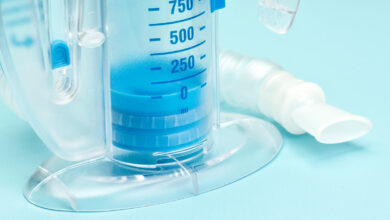The Best Foods to Heal Your Gut After Taking Antibiotics

You know the feeling: You take a course of antibiotics and are amazed by how much better you are only after a few doses. It’s a shining example of modern medicine at its finest. But for some people, taking these life-saving medications can come with a not-so-wonderous side effect: gastrointestinal distress. Maybe it’s cramps, or diarrhea, or your stomach just feels a bit…off. Whatever the exact symptoms plaguing you, it’s not uncommon for antibiotics to wipe out the good bacteria in your gut and do a number on your GI health.
Fortunately, what you eat can actually help bring things back into balance. By choosing the right foods—such as a wide variety of plants rich in prebiotic fiber, as well as fermented foods like sauerkraut and yogurt with live cultures—you can help rebuild a healthy gut microbiome.
Here’s what you need to know about fine-tuning your diet after a round of antibiotics takes its toll, and the best foods you can eat to heal your gut during this vulnerable time.
How antibiotics can affect your gut bacteria
Antibiotics are medications prescribed to treat many different types of bacterial infections, like sinus infections, strep throat, urinary tract infections (UTIs), pelvic infections, and bacterial vaginosis (BV). They work by wiping out bacteria and preventing them from multiplying. While this allows antibiotics to do a lot of good, it also means the drugs may inadvertently mess with the bacteria that’s supposed to be populating your digestive system.
It helps to understand that a healthy gut microbiome (the ecosystem of trillions of microorganisms living within your digestive tract) contains a balance of different types of bacteria. The “good” microbes help keep the “bad” microbes in check and the result is a healthy environment that functions as it should. But oral antibiotics aren’t all that selective, meaning they don’t target only the microbes that are making you ill.
“They destroy not only the bacteria that is causing the infection but many other beneficial bacteria as well,” Roshini Rajapaksa, MD, a board-certified gastroenterologist at NYU Langone, tells SELF. “In this way, they can disrupt the balance of your gut microbiome.”
The resulting imbalance is known as gut dysbiosis. (Gut dysbiosis can also occur for other reasons, like stress, diet, long-term inflammation, diet, alcohol use, and other types of medications.) “In some cases, antibiotics can also weaken the gut barrier, making the digestive system more vulnerable to inflammation and irritation,” Melinda Ring, MD, a board-certified internal medicine doctor and executive director of the Osher Center for Integrative Health at Northwestern University, tells SELF.
“Broad-spectrum antibiotics, which target a wide range of bacteria, tend to have a greater impact on gut health compared to more targeted antibiotics,” Dr. Ring adds. Broad-spectrum options are typically used when the precise cause of an infection is unknown or when multiple types of bacteria may be involved—examples include azithromycin (Z-pack) and amoxicillin/clavulanic acid (Augmentin)—versus a situation where doctors can pinpoint the specific bacteria to blame and prescribe a more targeted medication.
Signs that antibiotics are messing with your digestive system
Some signs your gut may have taken hit from a round of antibiotics include:
- Loose or watery stools; a condition known as antibiotic-associated diarrhea
- Bloating
- Excessive gas
- Upset stomach
- Cramping
- Other changes in bowel habits, such as constipation
While any of these symptoms are possible, taking antibiotics does not automatically guarantee you’ll experience GI dysfunction. Research shows that somewhere between 5 and 35% of people experience antibiotic-associated diarrhea, for example.
And the severity of gut symptoms depends on several factors, including the type of antibiotic you take, the dosage, and how long you take it for or how frequently you take it, Dr. Ring says. But even low doses or short courses of antibiotics can tip some people’s microbiomes into a state of disarray, research shows.
People who are older and have weaker immune systems are also at higher risk of experiencing gut symptoms and more serious problems like C. diff, an overgrowth of a type of bacteria called Clostridioides difficile, which can cause diarrhea, nausea, fever, stomach pain, and colon inflammation. This infection can lead to dehydration and other serious complications, like sepsis, if not treated quickly; it can also persist and cause recurring infection in some people.
What to eat to heal your gut after taking antibiotics
If you suspect a round of antibiotics is causing your GI distress, some simple dietary changes may help you get back on track. “Eating the right foods and avoiding the wrong foods can make a big difference in rebuilding a healthy microbiome after exposure to antibiotics,” Linda Shiue, MD, a board-certified internal medicine physician, director of culinary and lifestyle medicine at Kaiser Permanente, and chef, tells SELF.
Here are some different types of food to consider integrating into your diet, with some information about why each is helpful.
Prebiotic foods
Prebiotics are a type of non-digestable fiber that “serve as nourishment for beneficial gut bacteria, helping them to grow and thrive after being depleted by antibiotics,” Dr. Ring explains. When gut bacteria ferments this fiber, it also creates short-chain fatty acids, which improve gut health, Dr. Shiue tells SELF. Specifically, short-chain fatty acids nourish the cells within your gut lining, promoting a healthy intestinal barrier and mucus production and lowering inflammation.
Some prebiotic-rich food options include berries, asparagus, apples, garlic, onions, leeks, dandelion greens, chicory root, whole oats, and green bananas.
Probiotic foods
Probiotics are living microorganisms that benefit gut health by supporting digestion and immune function, restoring balance to your gut microbiome, and replenishing healthy gut bacteria. “Specific strains, like Lactobacillus rhamnosus GG and Saccharomyces boulardii, are particularly effective in reducing antibiotic-associated digestive issues,” Dr. Ring says.
Many fermented foods are rich in probiotics. Some options to try include kimchi, miso, sauerkraut, yogurt with live cultures, kombucha, and kefir.
Other fiber-rich foods
While all prebiotic foods are considered fiber, not all sources of fiber are prebiotic. Prebiotic fibers are important because they provide good bacteria with the nutrients they need to thrive, but other types of fiber help keep your gut in good shape in additional ways, such as via bulking up stools and helping them move through the GI tract. “Fiber supports digestion by feeding beneficial bacteria, promoting regular bowel movements, and helping to reduce bloating and discomfort,” Dr. Ring says.
The key to incorporating fiber into your diet? Aim for a wide range of fruits and vegetables. Recent research in the journal Nature Microbiology shows an association between eating a wide range of plants and the presence of lots of beneficial bacteria in the gut. Meanwhile, other research suggests that a fiber-deficient diet could actually worsen the negative impact of antibiotics on the microbiome as well as delay recovery.
Another quick note: If you’re in the throes of diarrhea, sometimes fiber-rich foods (especially those containing insoluble fiber) can make it worse. It’s important to introduce more fiber into your diet gradually, and with a lot of water, to increase the odds it’ll help with your symptoms instead of making them worse.
Consider trying whole grains like oats, quinoa, and brown rice; legumes like lentils, beans, and chickpeas; nuts; seeds; fruits like apples, bananas, and berries; and vegetables such as broccoli, carrots, and leafy greens.
Omega-3 fatty acids
Research suggests that foods that are rich in omega-3 fatty acids may help fight inflammation, support a healthy gut microbiome, and promote overall digestive health, Dr. Ring says
Not sure which foods to try? Consider fatty fish like salmon, sardines, mackerel, and tuna, as well as flaxseeds, chia seeds, and walnuts.
Are there any foods you should avoid?
All this talk about what to eat may have you wondering if there are any foods you should avoid if your gut is feeling off during or after a course of antibiotics. Dr. Shiue recommends staying away from refined and added sugars, ultra-processed foods, artificial sweeteners, and alcohol.
“All of these are inflammatory, and inflammation reduces the ability to restore beneficial gut bacteria in several ways, including interrupting the gut barrier, leading to what is called leaky gut and promoting the growth of harmful bacteria,” Dr. Shiue says. Sugar also reduces the production of those beneficial short-chain fatty acids we mentioned earlier, she adds.
Since gut health is very individualized, there may be some foods that you find just tend to mess with your digestion. So it might be especially important right now—when your belly is already feeling wonky due to antibiotics—to diligently steer clear of those things.
What about probiotic supplements?
Some doctors may recommend taking a probiotic supplement while you’re on antibiotics to bolster your gut against the potential onslaught, but this use is hotly debated. The truth is there’s a lack of research to prove that any specific supplements will move the needle in a meaningful way—or in a way that’s better than simply eating probiotic foods. And since supplements are not regulated like medications are, there’s no guidance to say exactly which strains to take and in what amounts and at what frequencies to effectively protect or restore the gut bacteria.
In fact, while some studies suggest that these products can help, others contradict this. For example, Dr. Shiue notes, one study showed that while the probiotic bacterial strains introduced were able to repopulate the gut after antibiotic use, this colonization actually delayed the normal recovery of the gut microbiome, which contains many more strains (up to a few thousand) than can be put into a supplement. (The biggest benefit so far has been seen in people with a higher risk of C. diff, though what qualifies someone as “high risk” is also debated among experts.)
The simplest strategy for keeping your gut happy during and after taking antibiotics? Focus on eating an overall balanced diet that’s rich in fiber and probiotics. We’re talking foods like yogurt, kimchi, oats, legumes, and a variety of fruits and veggies. But even that isn’t always bulletproof: You could load up on all the gut-healing foods and still feel a little off. If this happens, try not to stress. Instead, check in with your doctor for advice. With any luck, a little digestive distress will be just a small trade-off for getting past your illness and feeling like yourself again.
Related:
- 5 Little Things GI Docs Do Each Day for Better Gut Health
- What Is Prebiotic Soda—and Is It Actually Good for You?
- WTF Is a ‘Ghost Poop’ and Why Is It Such a Strong Indicator of Your Gut Health?
Get more of SELF’s great service journalism delivered right to your inbox.


